Explore our definitive guide on British Afternoon Tea etiquette at The Ritz London, including what to wear for afternoon tea at our 5 star hotel.
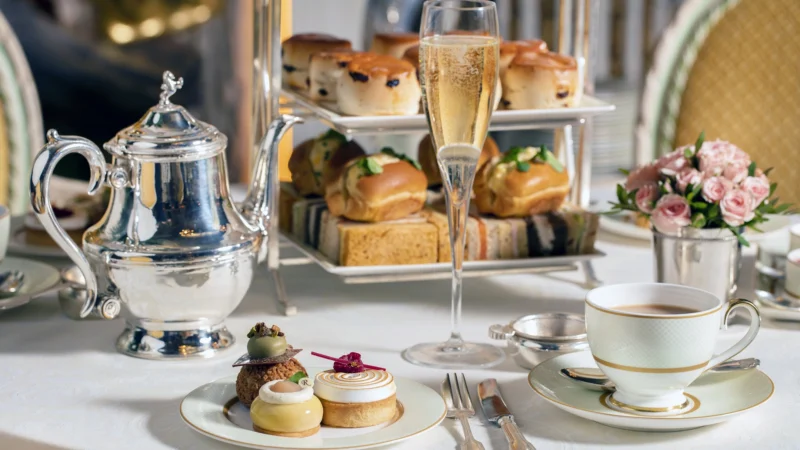
When it comes to this fine British ritual, guests from the world over and the United Kingdom alike find themselves questioning the finer details of Afternoon Tea etiquette. Having served Afternoon Tea for over 116 years, we welcome the opportunity to delve deep into the perplexing world of Afternoon Tea manners and etiquette. The fear of a faux pas will soon be behind you.
What’s in a name?
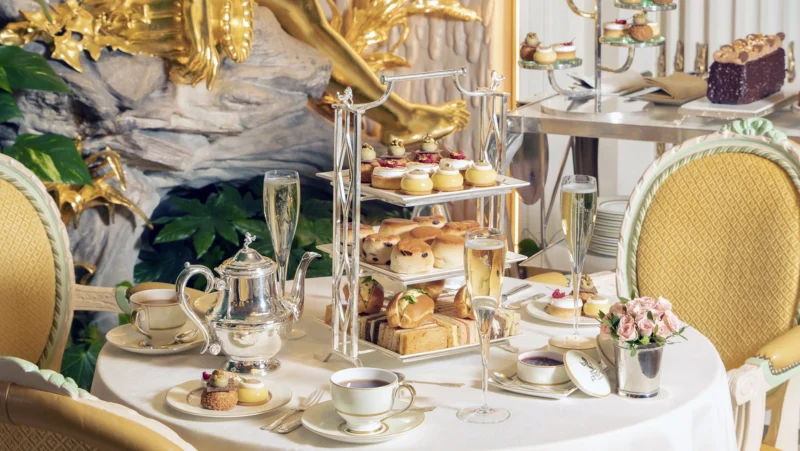
Afternoon Tea, high tea, cream tea or simply, tea. A plethora of names are used, all supposedly referring to the same event, which can bemuse even the most experienced tea aficionado.
The term high tea originates from the evening meal of the working classes during the eighteenth and nineteenth centuries and is still used today but is often abbreviated to ‘tea’. Consisting of a substantial meal of bread, cheese, meat, and vegetables and often accompanied by hot cup of tea, it was eaten after weary workers returned home at 6pm. One theory for the meal being called ‘high tea’ is because it was eaten at a high table or counter, rather than the low tables that Afternoon Tea was customarily served on.
Meanwhile, a cream tea is simply the scone element of an Afternoon Tea, served alongside clotted cream or butter and strawberry preserve, as well as a cup of tea (naturally). Cream tea is most associated with the West Country in England, an area which is the epicentre of another scone-based debate still to come.
Hence why at The Ritz, we call our offering of finger sandwiches, scones, pastries and cake, Afternoon Tea, tracing back to the custom started by the Duchess of Bedford when she had a desire for a light snack in between lunch and dinner. Phew, glad we got to the bottom of that one.
A delicious debate
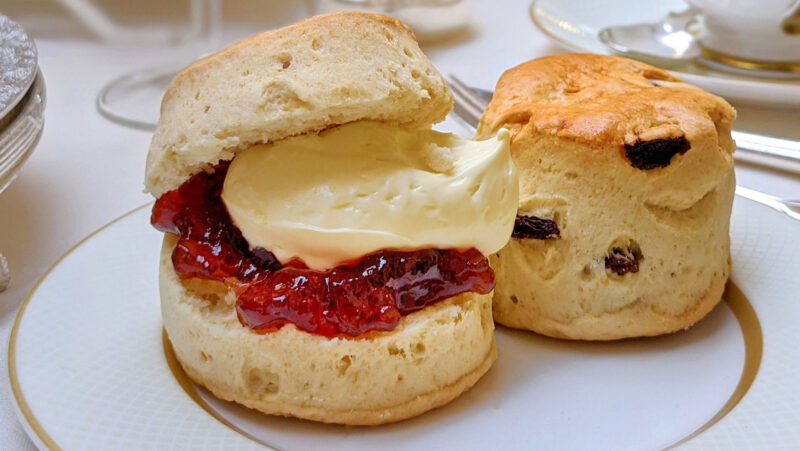
The manner of eating scones (pronounced either scone like ‘gone’ or scone like ‘cone’, there’s no judgement here) can be a point of contention at even the most civilised Afternoon Tea table. Whether to break or slice a scone is the initial question. Everyone has a preference of course, but we like to walk on the wild side and save our cutlery until the next step.
However the scone has been opened, the next decision is whether to add cream first or jam. Returning to the West Country, it is the Cornish way to add a generous dollop of jam, followed by cream, whereas it is the Devonshire way to spread plenty of cream first, then jam. Whichever approach steals your fancy, all we know is that they’re equally as delicious.
A Storm in a Teacup
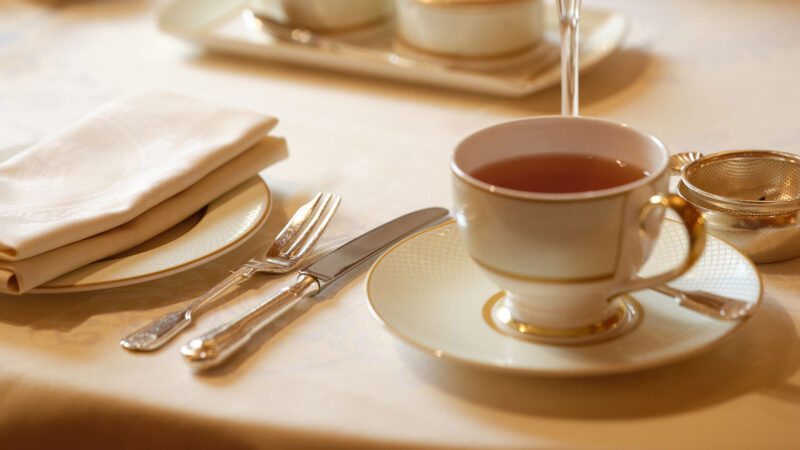
The dilemmas don’t stop at scones, as tea also offers up its fair share of etiquette conundrums. Afternoon Tea lore has it that the custom of pouring milk into the teacup first arose to prevent the delicate fine bone china from cracking under the heat of the tea. Today, however, it is common to pour the milk in after, adjusting the strength to your taste. That is of course if milk is used at all, as often teas featuring citrus notes, such as Earl Grey, are best served without milk altogether. If in doubt, our afternoon tea waiters will be delighted to steer you through to the perfect cup of tea.
Milk poured (or not), the time has come to take a sip, but which is the correct way to do so? No need to raise pinkies in the air, just a gentle grip on the handle will suffice. After all, it’s what’s inside the teacup that matters.
Dress for the occasion
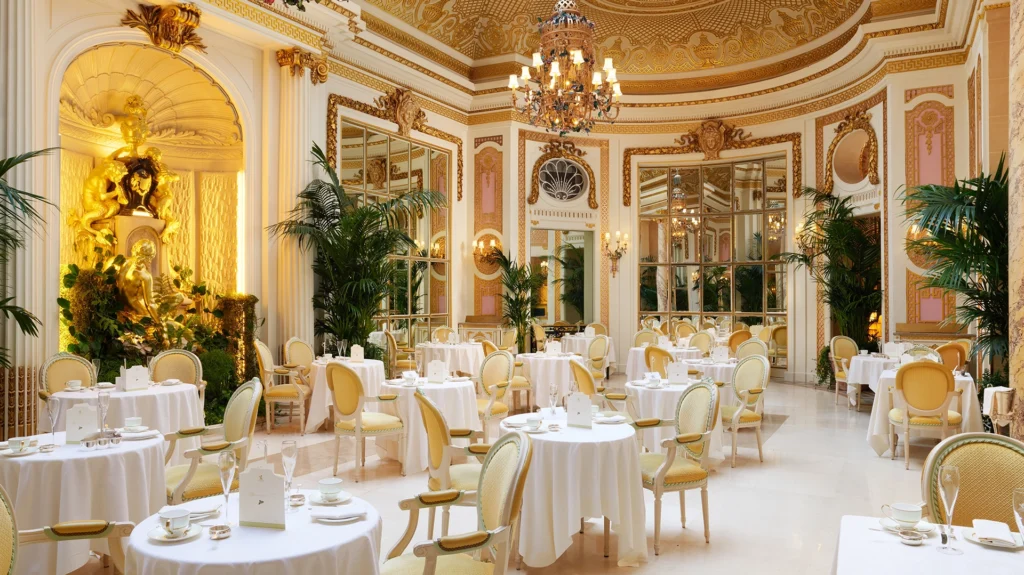
In the Victorian era, ladies started to dress in their finest hats, gowns, and gloves for the taking of tea between four and five o’clock, as it transitioned from a mid-afternoon snack to a renowned social occasion. In keeping with this rise in prominence, Afternoon Tea was no longer simply taken at home, but in the dazzling tea rooms of London’s finest hotels, most notably of course, at The Ritz.
Whilst some things have changed over the years, others have stayed the same and rightly so. Just as the ladies of London society in the 20th century put on their finest dresses for an afternoon outing at The Ritz, our wonderful guests in the 21st century need no excuse to don their most elegant outfits to make the occasion extra special. When dining in the breath-taking ambience of the hotel’s Palm Court, complete with chandeliers, towering pillars and 24 carat gold details, equally divine outfits come as standard.
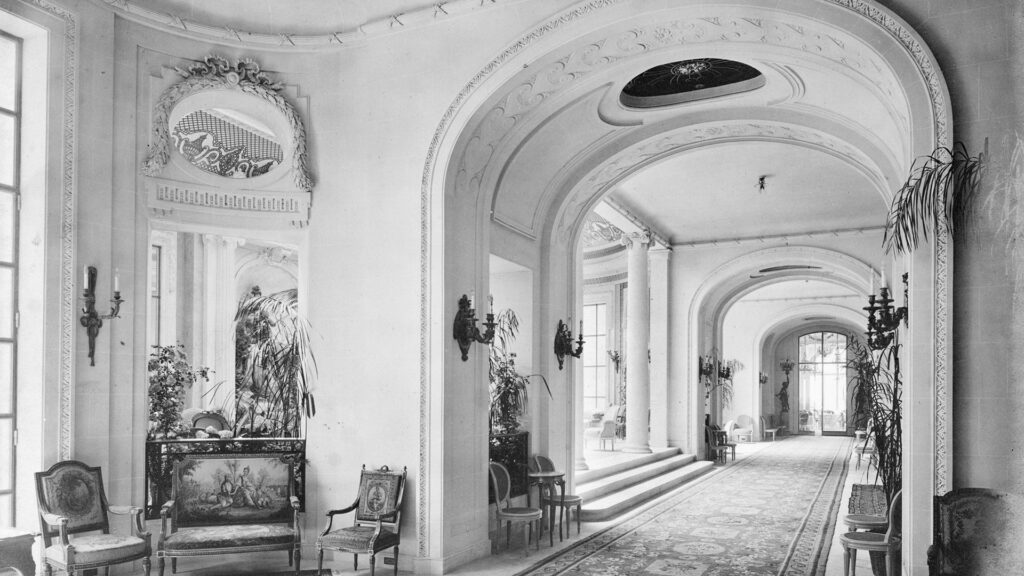
Did you know? The Ritz was the first hotel to welcome unchaperoned ladies to enjoy Afternoon Tea together. In fact, The Long Gallery was designed specifically for two ladies to walk side by side in their voluminous dresses.
While considering what to wear to Afternoon Tea, note that The Ritz London has a dress code in different areas of the hotel as follows: Gentlemen are required to wear a jacket and tie (jeans and sportswear are not permitted for either ladies or gentlemen) for afternoon tea in The Palm Court, and for lunch and dinner in The Ritz Restaurant and The Ritz Room. In all other areas of the hotel (The Ritz Restaurant breakfast service, The Rivoli Bar, The Long Gallery, and the Cigar Lounge), smart casual attire is required. Please note that shorts, trainers and sportswear are not permitted in any of the hotel’s restaurants or bars.
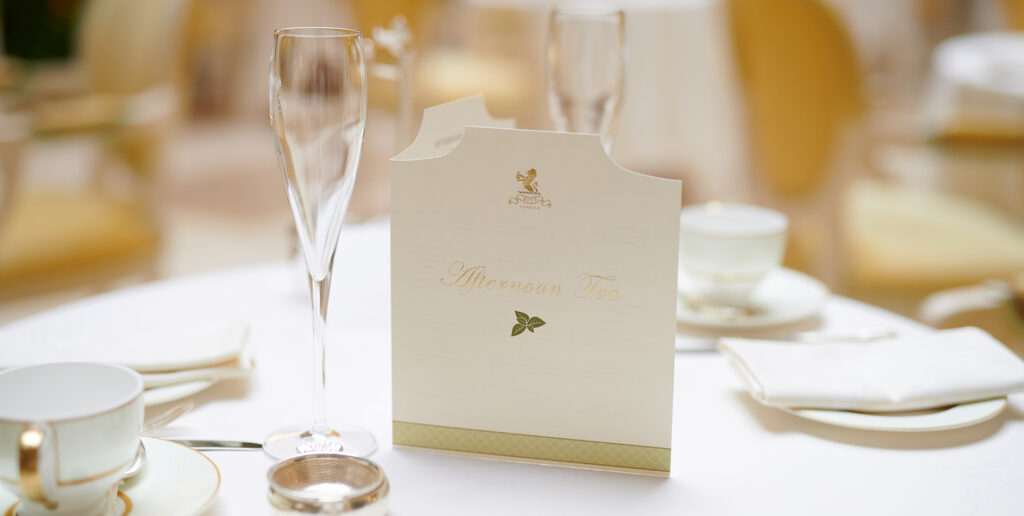
Ultimately, whether you prefer one lump or two, or cream first or jam, Afternoon Tea at The Ritz is yours to enjoy as you wish. Sticklers for the rules and rebels without a cause are welcome to enjoy Afternoon Tea side by side, meaning the experience is unique to each guest, just how it should be. Who knows, you may even create some traditions of your own during your time in the tearoom…




